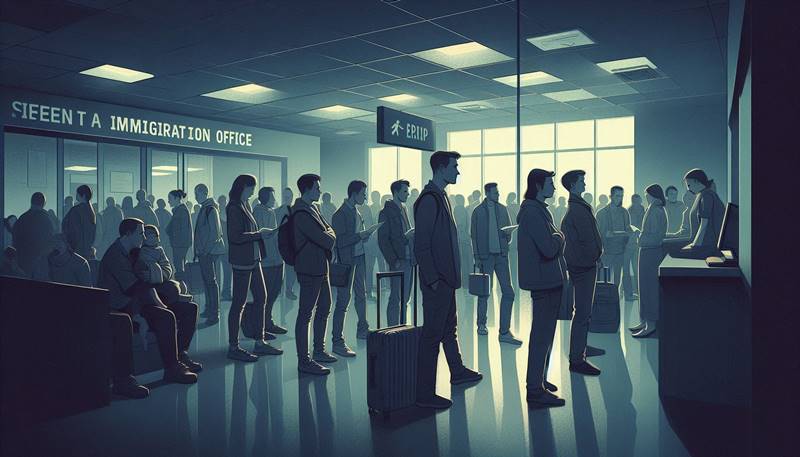Explore how Article 39 of the Magna Carta shaped Common Law and how its principles compare with Civil Law.

Introduction
“No free man shall be seized or imprisoned, or stripped of his rights or possessions, or outlawed or exiled, or deprived of his standing in any other way, nor will we proceed with force against him, or send others to do so, except by the lawful judgment of his equals or by the law of the land.”
This principle became the foundation of due process in English law. It limits arbitrary power and ensures that no individual faces punishment without lawful judgment. Over time, this article influenced legal traditions across the world, including the United States and the Commonwealth nations.
Brazil, however, developed under a Civil Law system rooted in Roman law and later shaped by European codifications, mainly the Napoleonic Code. Unlike Common Law, which relies on judicial precedent, Civil Law emphasizes written codes and statutes. Despite these differences, both systems share a concern for fairness, legality, and individual rights.
This article explores how Article 39 shaped English Common Law and compares its core ideas with the Brazilian constitutional and civil law tradition. It also examines how both systems interpret liberty, justice, and the rule of law, showing how two distinct legal cultures pursue the same ideal: protection against arbitrary authority.
1. The Historical Background of Article 39
Article 39 was born out of political tension. In 1215, English barons rebelled against King John’s abuse of power, particularly his arbitrary taxation and imprisonment. They sought guarantees that even the king would be bound by law.
This clause introduced a revolutionary concept: the law stands above the ruler. Before the Magna Carta, monarchs often acted at will, exercising both executive and judicial powers. Article 39 asserted that judgment must come from “the lawful judgment of equals” or “the law of the land.” These phrases later evolved into the notion of due process of law.
Through centuries, judges and scholars interpreted Article 39 as a universal safeguard. During the reign of Edward III, the phrase “law of the land” was officially equated with “due process.” This principle reached its mature form in the seventeenth century, influencing the Petition of Right (1628) and the Habeas Corpus Act (1679).
By the time of the Glorious Revolution (1688), Article 39 had become a cornerstone of constitutional government. It inspired thinkers like John Locke, who argued that liberty depended on the rule of law and consent. Later, these same ideas crossed the Atlantic, shaping the Fifth and Fourteenth Amendments to the U.S. Constitution.
2. The Core Principles of Article 39
Article 39 expresses several intertwined legal concepts:
- Personal Liberty – No one can be deprived of freedom without lawful cause.
- Property Rights – No arbitrary confiscation of possessions is allowed.
- Equality Before the Law – The judgment of “equals” implies fairness and impartiality.
- Due Process – Legal procedures must precede punishment.
- Rule of Law – All, including rulers, are subject to the same legal standards.
Together, these ideas mark the foundation of modern constitutionalism. The article limits governmental discretion, demanding justification for every act of coercion. It turns law into a shield protecting individuals from power rather than an instrument of oppression.
Transitioning from medieval feudalism to early constitutional monarchy, Article 39 became a symbol of legal rationality. It introduced predictability into government action and provided a model for future human rights guarantees.
3. Common Law and the Legacy of Article 39
The Common Law system grew organically from judicial decisions. Judges relied on precedent, reasoning by analogy, and interpreting statutes in light of earlier cases. In this environment, Article 39 did not remain a static clause. It evolved through centuries of judicial interpretation.
In the seventeenth century, Chief Justice Edward Coke famously declared that even the king was “under God and the law.” His decision in Dr. Bonham’s Case suggested that courts could declare royal acts invalid if they violated fundamental principles of justice. This doctrine laid the groundwork for judicial review, later adopted by the United States.
Thus, Article 39’s meaning expanded beyond protection against arbitrary imprisonment. It became the legal and moral foundation for constitutional governance, fair trial rights, and checks and balances.
In the Common Law tradition, rights are often discovered through judicial interpretation rather than created by legislation. The gradual accumulation of case law built a framework that ensured procedural fairness and limited state power.
4. The Brazilian Civil Law Tradition
Brazil’s legal culture developed differently. As a former Portuguese colony, Brazil inherited a system based on Roman Law, codified in the Ordenações Filipinas and later replaced by national codes. After independence in 1822, Brazil continued to rely on written statutes rather than precedent.
The Brazilian Civil Law system prioritizes clarity and uniformity. Laws are codified, and judges apply them according to general principles rather than relying on past cases. The goal is to reduce judicial discretion and maintain legal certainty.
Yet, modern Brazilian law integrates constitutional principles that echo the spirit of Article 39. The 1988 Constitution, known as the Constituição Cidadã (“Citizen Constitution”), guarantees fundamental rights such as liberty, equality, and due process.
Article 5 of the Brazilian Constitution explicitly provides that “no one shall be deprived of freedom or property without due process of law.” This mirrors the ancient promise of the Magna Carta. The Brazilian system, therefore, protects individuals from arbitrary authority through written constitutional guarantees rather than judicial precedent.
5. Comparative Analysis: Article 39 and Brazilian Law
5.1. Due Process
Both systems recognize due process as essential to justice. In England, it evolved from custom and judicial interpretation. In Brazil, it was enshrined directly in constitutional text.
The Common Law model emphasizes the procedural aspect—the right to a fair hearing, impartial tribunal, and lawful evidence. The Civil Law approach extends due process to substantive fairness, ensuring that laws themselves respect fundamental rights.
Brazilian courts, particularly the Supreme Federal Court (STF), have interpreted due process broadly. They consider both legal formalities and material justice, meaning that even a law properly enacted may be unconstitutional if it violates basic principles of fairness or proportionality.
5.2. Judicial Authority
Under Common Law, judges shape the law through decisions. Under Civil Law, judges apply the law as written. However, Brazilian jurisprudence has evolved. In recent decades, the STF began adopting binding precedents (súmulas vinculantes) to ensure consistency, reflecting a gradual convergence toward Common Law practices.
Still, the philosophical foundation differs. In England, Article 39 symbolizes the historical struggle against royal power. In Brazil, constitutional guarantees represent a response to authoritarian regimes of the twentieth century, especially the military dictatorship (1964–1985).
Both systems, though born in different contexts, share the same goal: preventing abuses of state power.
5.3. Liberty and Human Dignity
The Magna Carta’s “free man” referred to a privileged class, not universal liberty. Over time, however, this phrase expanded to include all citizens. Brazil’s Constitution, in contrast, begins with the recognition that human dignity is the foundation of the Republic.
Thus, what began as a feudal privilege in England became a universal human right in modern Brazil. The two systems reflect the evolution from status-based to rights-based societies.
5.4. The Rule of Law
In Common Law, the rule of law grew from judicial independence and precedent. In Civil Law, it arises from legislative supremacy and constitutional hierarchy.
Brazil’s rule of law depends on the Constitution as the highest norm, binding all authorities. The Magna Carta’s rule of law emerged from the idea that the king must obey the law, a revolutionary concept for its time. Both systems now converge in requiring accountability, transparency, and respect for legal limits.
6. The Influence of Article 39 Beyond England
Article 39 transcended its medieval context. It influenced not only the U.S. Constitution but also the Universal Declaration of Human Rights (1948). Article 9 of that declaration states: “No one shall be subjected to arbitrary arrest, detention, or exile.”
This global legacy demonstrates how a clause written for thirteenth-century barons became a universal moral principle. Brazil, as a signatory to international human rights treaties, incorporates these norms into its legal framework. The Brazilian Federal Constitution explicitly references international human rights standards, reinforcing the connection between global and domestic law.
7. Differences in Legal Culture and Application
Despite shared values, the legal reasoning in both systems differs sharply.
- Common Law values precedent and case-by-case reasoning.
- Civil Law values codification and systematic coherence.
In England, legal rules grow incrementally from judicial interpretation. In Brazil, they derive from comprehensive codes—the Civil Code, Penal Code, and procedural statutes.
However, globalization and comparative law have blurred these boundaries. Brazilian courts now cite foreign precedents, especially in constitutional cases. English law, meanwhile, increasingly references international conventions such as the European Convention on Human Rights.
These interactions suggest a hybridization of legal cultures, where Article 39’s spirit continues to inspire different systems through dialogue and adaptation.
8. Modern Challenges to Due Process
The modern world presents new threats to the principles of Article 39. Digital surveillance, preventive detention, and national security laws test the limits of liberty. In both England and Brazil, courts must balance individual rights against collective safety.
In Brazil, concerns about pre-trial detention and prison overcrowding highlight the gap between legal ideals and reality. English courts, too, face criticism for extended detention without charge under terrorism legislation.
Both systems strive to adapt old principles to new realities. The core question remains the same: how far can the state go before it violates the essence of due process?
9. Convergence and Divergence: Toward a Shared Legal Future
Although Common Law and Civil Law began on opposite paths, modern constitutionalism brings them closer. Globalization, international treaties, and human rights conventions create a shared legal vocabulary.
Brazil’s adoption of binding precedents shows a shift toward the flexibility of Common Law. Conversely, English law’s growing reliance on written human rights instruments shows a move toward codification. For more information, check the official of the STF website.
At the heart of this convergence lies the timeless promise of Article 39: that no person shall be punished without lawful judgment. This ideal now belongs to the world, not just England.
Conclusion
Article 39 of the Magna Carta remains one of the most enduring legal statements in history. It transformed feudal privilege into a universal guarantee of justice. Its influence spread from medieval England to the entire world, shaping modern understandings of liberty and legality.
Brazil’s Civil Law system, though born in a different tradition, upholds the same values. Its Constitution protects individuals from arbitrary power, ensuring that every act of the state complies with due process and fundamental rights.
While Common Law builds on precedent and judicial creativity, Civil Law relies on codification and textual authority. Yet both traditions converge in their dedication to the rule of law and human dignity.
Article 39’s message remains as relevant today as in 1215: no one is above the law, and every person deserves justice through lawful process. As legal systems evolve, this ancient promise continues to guide humanity toward fairness, restraint, and respect for rights. For more information, go to our home page


